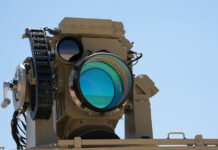Start < Page 1 of 5 >
For many years, homogenous rolled steel (RHA) provides the basic most commonly used armored hull structure. High Hardness Steel Armor (HHS) is employed primarily with light weight AFVs. Among other materials used for lightweight protection of AFVs is the aluminum armor, originally used with the M113 vehicles and the USMC’s Advanced Amphibious Assault Vehicle (AAAV). In some variants, primarily with add-on and up-armor suits, aluminum armor is combined with outer layers of hard steel or perforated steel (as implemented on Israeli M-113 APCs in 1982). Other versions of lightweight protection are the use of titanium armor, are used on Canadian M-113. Metal plate armor provides effective defense against kinetic energy penetration, when applied in adequate strength (effective armor mass). The major advantages of steel, aluminum or titanium armor are its low cost and the fact that the basic protection level does not deteriorate even after multiple hits. However, its main deficiencies remain their heavy weight and vulnerability to shaped charges penetration.
To reduce the total weight of an armor protection suites, and improving survivability against all types of threats, designers are introducing add-on “alternatives” to part of the basic plating of the armor suit. Add-ons versions include Explosive Reactive Armor (ERA) blocks, and composite elements made of ceramic-faced layer, applied on top of the base (steel) armor. For example, a combination of ceramic tiles with aluminum armor can be as effective as HSS at considerably lower weight. However, a major drawback is the fact that the ceramic material disintegrates on a projectile impact and therefore, loses its effect when facing multiple hits. Therefore, the most common application in ceramic armor is the use of ceramic tiles, composed of cylindrical pellets or mosaics of small cubes, embedded in energy absorbing matrix, which provide effective protection against multiple hits.
Despite the high level of protection provided by composite armor, it is effective primarily against small and medium caliber, kinetic energy threats, but is less efficient against anti-tank weapons using shaped charges (such as RPGs and HEAT mounting Tnti-Tank Guided Missiles – ATGM). The most effective countermeasure against these weapons is the modern ERA, which provides effective protection for heavy or light armored vehicles (excluding soft-skinned vehicles). While most modern versions of anti-tank weapons are using tandem warheads, capable of defeating basic ERA, the new protection modules use layered explosive as well as non-explosive reactive armor (NERA), which are initiated in sequence, to defeat the tandem warheads.
Additional parts of this article:
- Lightweight Armor Protection for Combat Vehicles
- Advanced Armor for Future Combat Systems
- Ceramic Armor Materials
- Ceramic & Composite Armor Protection Principles
- Vehicle Armor Protection



















